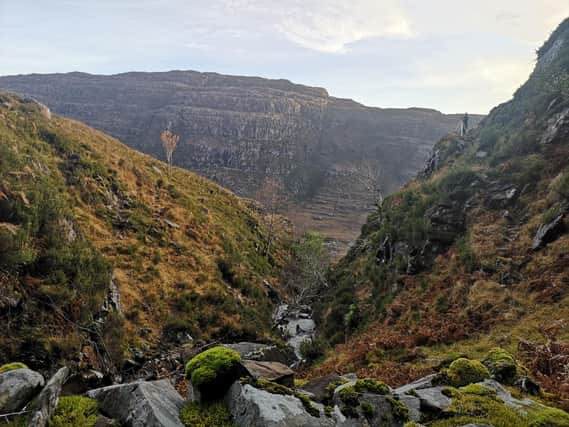Secret smugglers bothies and illegal whisky stills to be uncovered


Glenlivet Distillery and National Trust for Scotland will bring together the results of archival research and archaelogical digs across Scotland to illuminate the stories of our illegal whisky making past and its people in the new Pioneering Spirit project.
By the 1820s, as many as 14,000 illicit stills were being confiscated every year in Scotland and more than half the whisky consumed in Scotland was being enjoyed without the taxman taking his cut.
Advertisement
Hide AdAdvertisement
Hide AdEvidence of this lucrative illegal trade can still be found embedded in the landscape with it thought the remains of at least 30 illicit stills lie on National Trust for Scotland land alone.
Glenlivet’s founder George Smith was among those who risked life and liberty to produce illicit whisky at his farm at Upper Drummin. After the passing of the Excise Act in 1823, he was the first person in Scotland to apply for a licence to legally produce spirit. It is said the decision was wholly unpopular with other farmers making whisky on their land, with Smith given two pistols to protect his family and his new legal distillery.
Miriam Eceolaza, Global Marketing Director of The Glenlivet said: “We are proud to be supporting the National Trust for Scotland and the amazing work they do to protect, and celebrate, what makes Scotland unique.
"As a brand that holds so much history in the distilling of Scotch whisky, we are looking forward to learning more about the illicit trade that our founder was involved in, as well as the lasting impact it has had on the country’s rich heritage. We hope that through this partnership we can continue to educate and inspire whisky drinkers everywhere on the original story and taste of The Glenlivet.”
Excavations are due to take place at Torridon and Kintail in the north, Grey Mare’s Tail near Moffat in the South and the Mar Lodge Estate in Deeside as the project gets underway.
Derek Alexander, Head of Archaeology, National Trust for Scotland, said the project would help uncover the real stories behind Scotland’s national drink.
He said: “Our charity is always searching for new ways to tell Scotland’s stories and this project will help us shed light on a really fascinating era in Scotland’s history, which has shaped our culture and our landscapes too.
"With the goal of uncovering and sharing the stories behind Scotland’s illicit whisky industry, it’s only fitting we partner with a name that is so firmly part of this story. We’re looking forward to working closely with The Glenlivet to carry out this ground-breaking conservation project and uncovering new and interesting stories for everyone who loves Scotland.”
Advertisement
Hide AdAdvertisement
Hide AdInterest in Scotland’s illicit distilling history has grown in recent years. Last year, an excavation was launched at Blackmiddens on the Moray and Aberdeenshire border in an area known as Cabrach where illegal distilling was rife.
Blackmiddens was producing litres of illegal alcohol during the 18th Century with tales of whisky being smuggled into Aberdeen in coffins by gangs of freebooters.
Lookouts would ride a white horse to alert home distillers that the exciseman had entered the area with barricades later set up around Aberdeen to stop the freebooters entering the city limits.
A horse-drawn hearse was hired by the smugglers with the coffin filled with whisky. As it made it way past excise officials, locals would take off their hats as a sign of respect, with the whisky allowed on its way.
A message from the Editor:Thank you for reading this story on our website. While I have your attention, I also have an important request to make of you.With the coronavirus lockdown having a major impact on many of our advertisers - and consequently the revenue we receive - we are more reliant than ever on you taking out a digital subscription.Subscribe to scotsman.com and enjoy unlimited access to Scottish news and information online and on our app. With a digital subscription, you can read more than 5 articles, see fewer ads, enjoy faster load times, and get access to exclusive newsletters and content. Visit https://www.scotsman.com/subscriptions now to sign up.
Our journalism costs money and we rely on advertising, print and digital revenues to help to support them. By supporting us, we are able to support you in providing trusted, fact-checked content for this website.
Joy Yates
Editorial Director